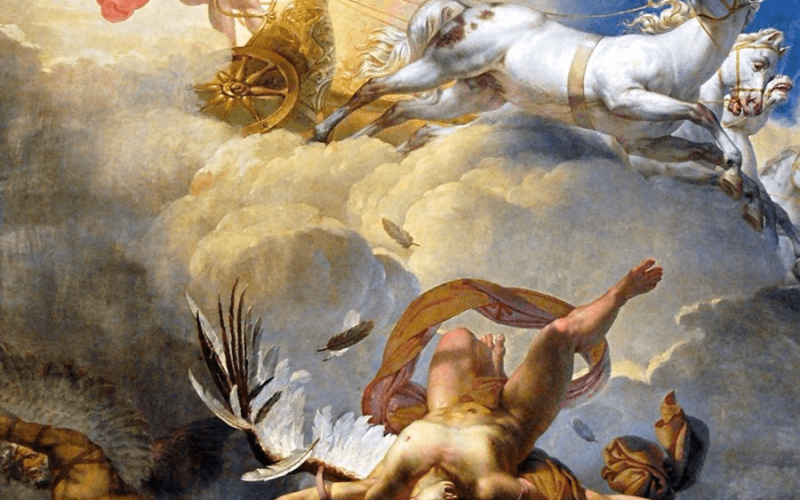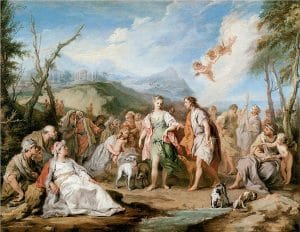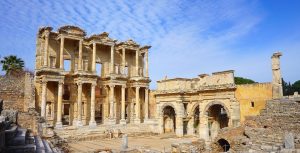Blog Titles
ToggleFestivals in Ephesus and Procession Festivities
The festivals and ceremonies held in the ancient city of Ephesus were organized to provide a ritual and a ceremonial feature of each of the calendar festivities that increase social cohesion and ensure the integration of an Ephesian individual or an Ephesian group with the society.
According to this, ceremonial features, which are magnificent celebrations organized to celebrate and respect a god, an event, a day, which has an important place in morality and social life, which are social habits adopted in society, differ from society to society, from city to city.
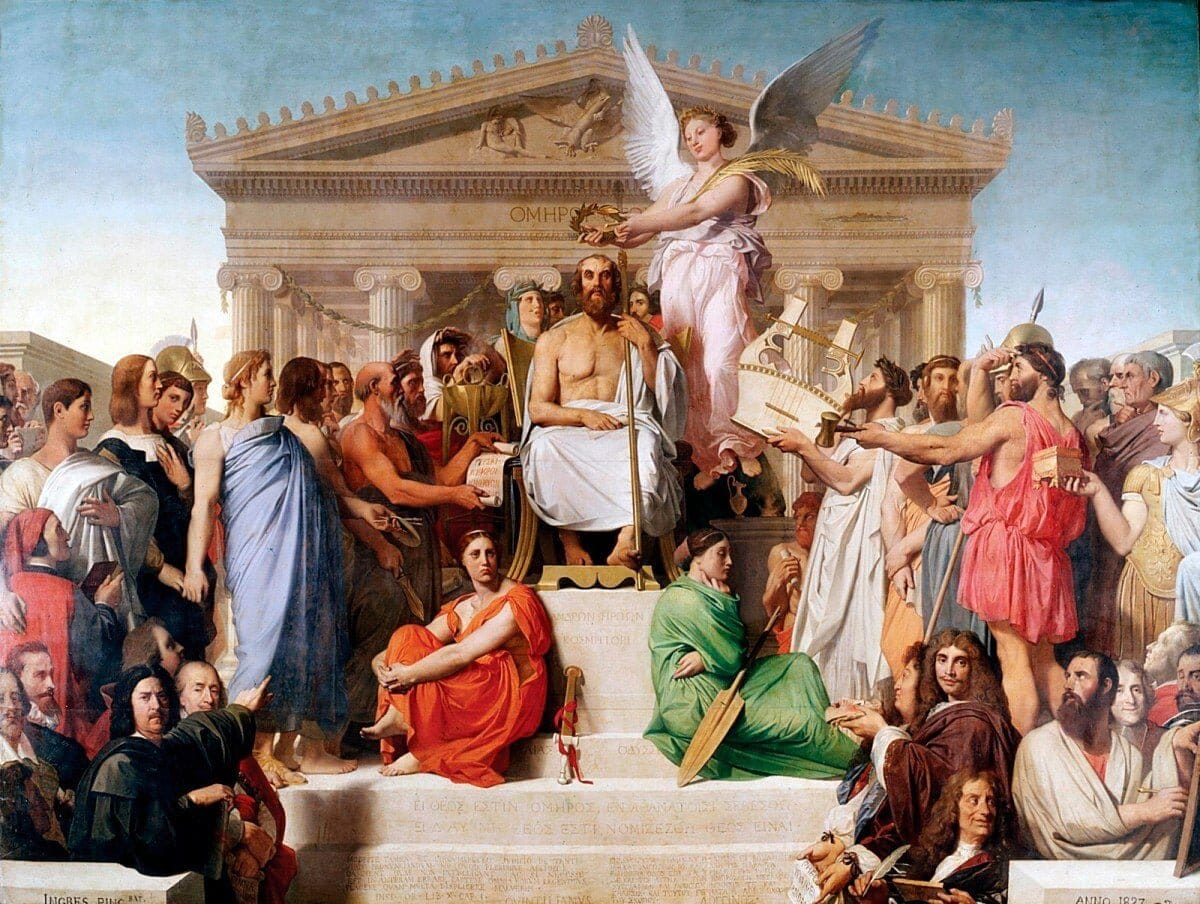
Ceremonial festivities, which are one of the most important forms of entertainment in social life in the polytheistic world to monotheistic religions, have many functions in the context of society-individual relationships. From a social point of view, festivals play an important role in social life in that they bring people together at the same time and place from all parts of society.
During the ceremonies, the differences in age, gender, social status, and in short, the economic and social life that separated the society from each other would disappear. In the ancient city of Ephesus, there were no festivities that we can define as secular during the Hellenistic period. Because all holidays were holy days dedicated to gods and goddesses.
Religious beliefs had an important place in the collective memory of ancient societies, and they were nourished by mythological stories, hymns, and epics that were passed down from generation to generation within the scope of oral tradition.
However, the supernatural power of the festivities covering all areas of life, from any daily event to an extremely privileged event, aimed at directing a certain action and being repeated with rituals, varies depending on nature, weather, climate, and social conditions.

The rituals performed at festivals and festivities and constituting the collective memory of the society are extremely important elements that ensure the preservation and continuation of the tradition. It is known that such calendar festivals are associated with dominant occupations such as agriculture and animal husbandry encountered in rituals.
In addition, festivals with their symbolic dimension are always based on the understanding of local events. The existence of various cults manifests itself in beliefs about agricultural pursuits and animal husbandry. When the festivities are considered from a religious point of view, they appear as a set of performances consisting of movement, dance, and similar forms of action and tools used in rituals.
Here we will see the festivals, ceremonies, festivities, and parades held in the ancient city of Ephesus.
In addition to these festivals, festivities, and parades celebrated in the ancient city of Ephesus, Ephesians also participated in the festivities held in Attica, Ionian cities, and later in Rome, to which they were culturally connected. In this way, a commercial link would have been provided between both the city of Ephesus and the union cities where the festival was held.
The rulers of the ancient city of Ephesus, where it was first founded, took into account the Attica calendar and planned its celebrations, harvests, and many cultural events according to this calendar. After the Julian calendar was adopted by Julius Caesar in 46 BC, the City of Ephesus also started to use this calendar. All cultural events in the city of Ephesus were celebrated based on this calendar.
According to the Attic calendar, we see the dates of the Festivals held in Ephesus, for which gods these festivals were held, who can participate in these festivals, and which animals were sacrificed.
Festivals held in Ephesus
Hekatombaion
Hekatombaion, which was the 7th and later the 1st month of the Attic calendar, was held between 15 July and 15 August today. This festival was held on the 7th day of the month of Hekatombaion for the God Zeus, God Apollo, and Goddess Hera. 100 cattle were sacrificed. The people and the slaves participated there.
It was celebrated on the 12th day of the month of Kronia Hekatombaion. It was celebrated for Kronos. It was arranged for the end of the harvest in agriculture. All the people and slaves participated together.
Synoikia was celebrated on the 16th or 17th day of the month of Hekatombaion. It was celebrated for the goddess Athena. It was also celebrated with all the People and other tribes from the surrounding cities.
It was celebrated on the 28th of the month of Panathenaia Hekthe atombaion. It was celebrated for the goddess Athena. Clothing “peplos” was very important. Clothing present clothing fashion show) was held. It was celebrated by all free people.
Metageition
It is the 2nd month of the Attic calendar and today corresponds to August 15 – September 15. It was held in the name of Goddess Artemis and God Apollo. All the public could attend.
The exact date of the hero is unknown. It was a festival in honor of Heracles, the god of athletes. All the people would participate. The children of people who were married from outside the city used to have a torch contest.

Boedromion
It is the 3rd month of the Attic calendar and today corresponds to September 15 – October 15. It was held in the name of Ares, the god of war. All the public could attend.
Genesia is a festival that starts on the 6th of the month of Boedromion and lasts for two days. We can say that it is a kind of funeral ceremony in honor of the aristocrats who died in the war. This event was not held in peacetime.
The Great Mysteries began on the 15th of the month of Boedromion and lasted for seven days. It was celebrated in Attica and Athens. Murderers and barbarians were forbidden to attend. This festival was celebrated in the name of the goddess Demeter and her daughter Persophone. The participants of the festival would first enter the sea or the river and then sacrifice the piglet.
Pyanopsion
Pyanopsion, which is the 4th month of the Attic calendar and corresponds to October 15 -15 November today, was celebrated in the cities of Ephesus, Miletos, and Priene in Anatolia. It was a festival held in the name of Goddess Demeter, God Dionysus, and God Apollo.
Proerosia, the agricultural festival of Proerosia, dedicated to Demeter, was held on the fifth day of the month of Pyanopsion. All the people would participate.
Pyanopsia is a primitive nature cult practice that takes place during this festive seed planting seed-plantings its name to the month of Pyanopsion. In this festival held in honor of Apollo, cooked beans, or “pyanaepsein”, were offered. Olive branches were placed in front of every house and temple. All the people would participate.
In this festival, which means Oschophoria, “carrying a bunch of grapes”, two young men dressed in women’s clothes, chosen from among the citizens’ children, carried the bunches of grapes in a basket. It was a festival held in honor of Dionysus. All the people would participate.
Thesmophoria, meaning “treasure, women carrying chests”, was celebrated only by women. The festival took place between the 9th and 13th of the month of Pyanopsion (October-November), which is the time of planting, with celebrations lasting five days. It was a festival held in honor of the goddess Demeter and the goddess Hera. It was a pre-marital preparation.
Chalkeia is a festival that takes place on the last day of the month of Pyanopsion. It is a festival held in honor of the God Hephaisatos and the Goddess Athena.
Apaturia is a festival whose last three days extend to the month of Pyanopsion. It is a festival held in honor of the God Zeus, the God Heracles, and the Goddess Athena, in which the patriarchs, namely men, participate. The festival was festive with the participation of the men from the sister city.
Boys’ haircuts during the transition to puberty were done at this festival. The fathers of legitimate children born that year would sacrifice either a ewe (Marya) or a goat to the god after registering these children.
Maimakterion
Maimakterion, which is the 5th month of the Attic calendar, corresponds to November 15 – December 15 today and symbolizes the events in the atmosphere, the transition from autumn to winter.
The month of Maimakterion, associated with this epithet, is the name given to the period sometimes from November and sometimes from mid-November to mid-December. It was organized in the name of the god Zeus, the god Dionysus and the god Hermes. All the public could attend.
Maimakteria, celebrated in honor of Zeus Maimaktes, is considered an extended continuation of the Oschophoria “grape-bearing, vintage” festival. The wine was forbidden to be consumed at this festival, but bread, buns, and fruit were offered to the gods. All the people attended this festival.
Diasia is one of the oldest festivals of the Attica region, celebrated in honor of Zeus Meilichios on the last three days of the month of Maimakterion. It was celebrated in the name of the gods Zeus, god Dionysus, and god Hermes. Those who could afford to sacrifice female sheep or pigs. Those who did not have an economic situation would offer cookies with animal motifs. All the people would participate.
Poseidon
Poseidon, the 6th month of the Attic calendar, is today between December 15 and January 15. Although there is not enough information about him, it indicates the existence of a festival called Poseidaia dedicated to Poseidon.
Haloa was a festival celebrated on the 26th of the month of Poseidon. The festival, which means “threshing place”, or “harvest festival”, was celebrated in honor of Demeter and Dionysus. All the people would participate.
Country Dionysia or Little Dionysia, which we learned from Aristophanes’ The Coalsmiths, in the festival, wine, wine bottles were carried and a goat was carried around in the procession. It is an agricultural festival entirely dedicated to Dionysus. Female sheep, pigs, and goats were sacrificed. All the people would participate.

Gamelion
The month of Gamelion today corresponds to January 15 – February 15 and is the 7th month of the Attic calendar. Lenaia is a festival celebrated in honor of the God Zeus, God Dionysus, Goddess Hera, and God Apollo on the 12th of Gameli approval, which means “marriage month”.
The Gamelia festival means “marriage month” and was celebrated on the 26th of each Gamelion month to celebrate the sacred marriage of Hera and Zeus on the island of Samos with a magnificent ceremony.
Anthesterion
The month of Anthesterion is the 8th month of the Attic calendar, which today corresponds to February 15 – March 15. Anthesteria is the oldest and largest festival held in honor of Dionysus in the month of Anthesterion in Athens and the cities of Ionia. It was a festival attended only by children.
Diasia was a festival dedicated to Zeus Meilichios in Attica and Ionian cities, after the Anthesteria festival, towards the end of this month, when the city walls were not yet built. On the day of Diasia, in which all citizens participated, the rich offered sacrifices to the god, while the poorly burned incense.
Elaphebolion
Elaphebolion, which corresponds to March 15 – April 5 today and is the 9th month of the Attic calendar, takes its name from the goddess Artemis’s adjective meaning “deer hunter”. It is known that this festival was also held in the cities of Ephesus, Miletus, and Iasos in Anatolia.
A celebration called Elaphebolia (deer hunting festivities) was held in honor of Artemis, and buns in the shape of deer were presented to the goddess. All the people attended this festival.
Asklepiaia Proagon is a festival celebrated in the month of Elaphebolion and dedicated to Asklepios. However, there is no information about the festival.
The Urban Dionysia is an ancient local festival that was celebrated in the month of Elaphebolion until the middle of the 6th century BC, the content of which changed over time. It is a festival held in honor of the god Dionysus and the god Asclepion. The bull was sacrificed. All the people would participate.
Munykhion/Mounikhion
The 10th month of the Attic calendar, which today corresponds to April 15 – May 15, Munikhion takes its name from a small harbor next to the acropolis of Piraeus. Like the month Elaphebolion, this month is dedicated to Artemis Munikhia. There is no other information about him except that a feast was dedicated to Eros on the 4th of the month.
Munikhia is one of the best-known Artemis festivals, which gives its name to this month. This festival was celebrated on the 16th of the month of Munikhion. In the early days, young girls were sacrificed for Artemis. Later, goats were sacrificed, adorned like a young girls, and adorned with precious jewels. All the people would participate.
Olympia is another festival celebrated on the 19th of the month of Munikhion. It was a festival held in honor of the god Zeus. Bulls were sacrificed. All the people would participate.
Thargelion
Thargelion, the 11th month of the Atik calendar, corresponds today to May-June. The most important event of this month is the Thargelia festival celebrated for the god Apollo and the goddess Artemis.
Thargelia was celebrated on the 7th of the month and dedicated to the god Apollo and the goddess Demeter, this festival lasted for two days, during which bulls and goats were sacrificed to Apollo. All the people would participate.
Plynteria was a festival dedicated to the Goddess Athena Aglauros and was celebrated on the 22nd of Thargelion. It is the day when the cult statue of the goddess, which has been made of wood since ancient times, is washed in the festival.
Kallynteria is the continuation of the Plynteria festival and is the festival where spring cleaning is done to the temple of Athena.
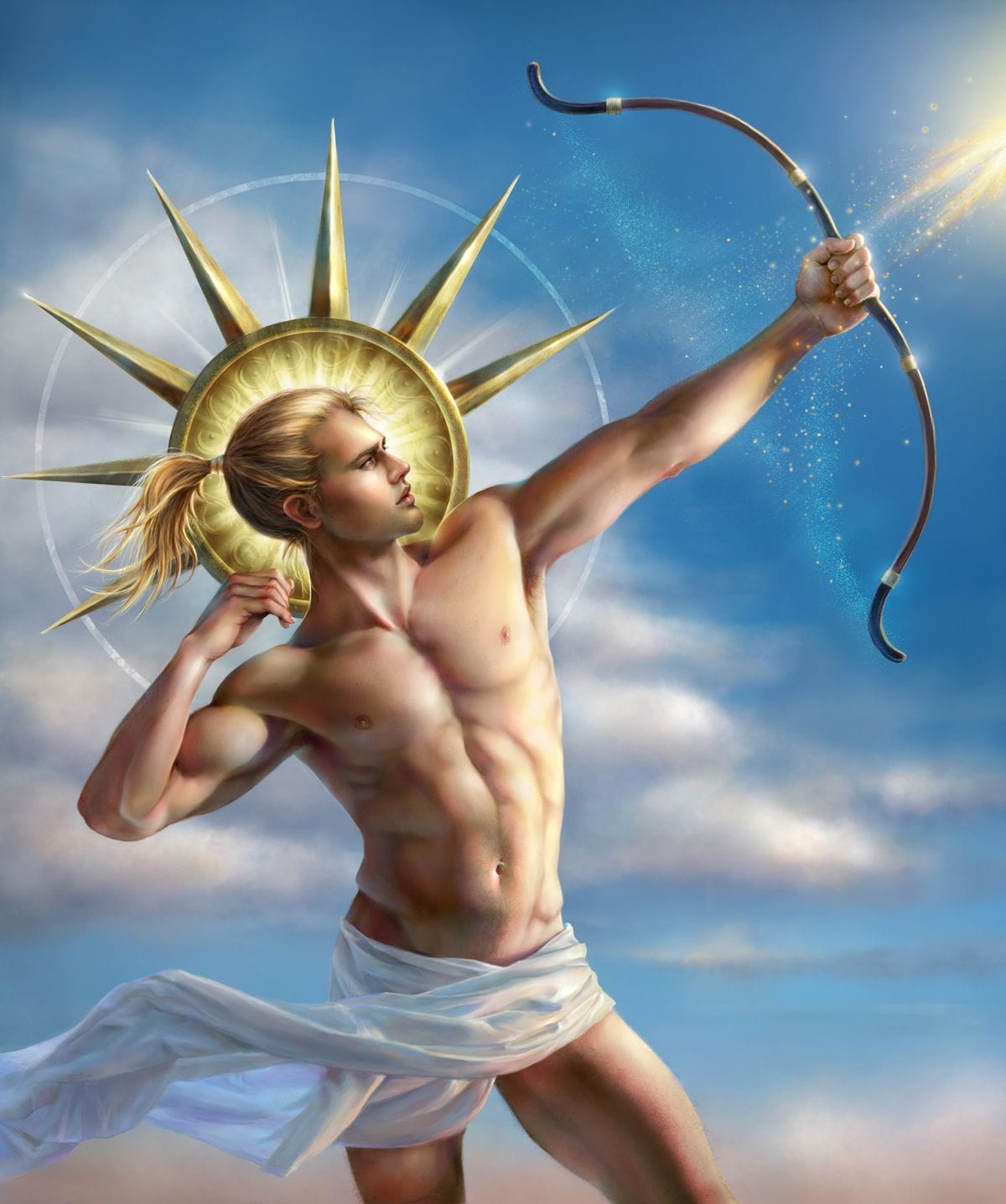
Skirophorion
Information about the festival, also called Skirophoria or Skira, celebrated in Skirophorion, the 12th and last month of the Attic calendar, is extremely insufficient. It was celebrated in honor of the god Zeus, the god Poseidon, the god Apollo, the goddess Athena, and the goddess Demeter. All the people would participate.
Dipolieia was celebrated on the 14th of the month of Skirophorion when the moon was full. It was held in honor of the god Zeus and all the people participated.
Bouphonia, which means “cutting a bull”, was celebrated in honor of Zeus since the time of the legendary king Erechtheion. This festival was held in honor of the god Zeus and the bull was sacrificed. All the people would participate.
Diisoteria is a festival held on the 29th in honor of Zeus Soter (Zeus the Redeemer). All the people would participate.
Details of these festivals celebrated in Ephesus, Ionian cities, and Attica;
Hekatombaion Festival and Festivities
Hekatombaion, which was the 7th and later the 1st month of the Attic calendar in the early days, corresponds to the 15th of July – 15th of August today, describing the sacrifice of a hundred cattle at the beginning and the sacrifice of many animals later.
Derived from the name of this month, which is the time to sacrifice a hundred cattle, the word hekatombaios is the joint title of Zeus and Apollo. Every year in the city of Ephesus, ceremonies were held for Apollo on the 7th of the Hekatombaion. The Hekatombe rituals, meaning “making a hundred cattle sacrifices”, were held before the Classical Age, and were performed at the Hekatombaia festival celebrated for Hera.
Kronia was one of the oldest Hellenic festivals held in honor of Kronos and was celebrated by the Ephesians on the 12th of the month of Hekatombaion, at the end of the harvest. Unlike his known qualities, Kronos appears here as the god of agriculture. The Kronia festival has played an important role in socialization as it brings together all the people living in the city at the same time and place.
On this feast day, which was open to the participation of all social classes, all slaves were freed and allowed to participate in flamboyant feasts with their masters and to run loudly in the city. The ancient name of the month Hekatombaion, which gave its name to this festival, which is also known in the Kronia, Ionia region, was the month of Kronion. The source of the Saturnalia festival celebrated in the Roman period of Ephesus is probably the Kronia festival.
Synoikia is a small festival celebrated in the name of goddess Athena on the 16th or 17th of the month of Hekatombaion in Helen and Attica. The festival, which was organized to celebrate and commemorate the cities that lived the Hellenic culture and the fact that all tribe members became Hellenic citizens, that is, the colonization (synoikismos), and to maintain the unity achieved, is probably related to the myth of Theseus.
So who is Theseus? Thesus, one of the most important heroes in Greek mythology, is depicted as a more polite and civilized person, as well as being as valiant as Heracles. Beyond being a hero who accomplished extraordinary things with his valor and courage, Theseus was a great statesman who institutionalized the Panathenai festival, ensuring the formation of Athenian democracy and the political integrity of Attica.
It is thought that the Panathenaia festival was organized in honor of Athena on the 28th of Hekatombaion and started during the time of the legendary Athenian king Theseus. Beginning from the 7th century BC, a dress “peplos” was presented on the feast day in Helen and Ephesus.
In this festival, competitions similar to the Olympian games known as the Great Panathenaia was held and another element was the bringing of the animals to be sacrificed by the representatives of the tribes of Helene and Attica. Also, while the Olympic games were held every four years, the Great Panathenaia was held every year. These games were founded by Hippocleides, a well-known aristocrat.
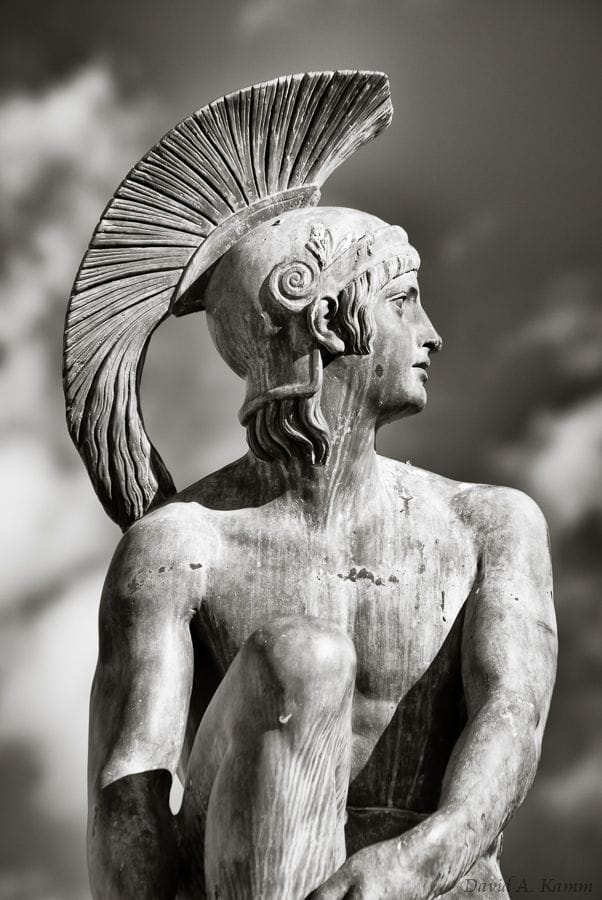
Metageitnion Festival and Festivities
It is the 2nd month of the Attic calendar and today corresponds to August 15 – September 15. Except for a festival called Metageitnia celebrated by “Metoikismos”, there are no big festivals this month. The name of the month is derived from Artemis and Apollo’s cult title (epithet) Metageitnios.
Although it is implied that on the 7th of Metageitnion, a festival called Metageitnia was organized in honor of Apollo in order to improve neighborly relations, there is no information in the written sources.
Heroa is a festival in the gymnasium (Attica) at Kynosarges, annually in the month of Metageitnion, the date of which is unknown. This festival began to be celebrated in the city of Ephesus in the 3rd century BC. In this festival, celebrations were held in honor of Heracles, the chief god of athletes.
There was a torch-carrying contest in which children of non-citizens, that is, married to a foreign woman, participated. The cult of Heracles was honored by these people, and the sumptuous feast of food and drink played an important role in the celebrations.
Boedromion Festival and Festivities
Boedromion, which is the 3rd month of the Attic calendar and corresponds to September 15 – October 15 today, takes its name from the word meaning “to come to help in response to a shout or call”.
Genesia is a two-day festival that begins on the 6th of the month of Boedromion. It was performed in funeral ceremonies organized by the state after the great wars. It was actually celebrated in honor of aristocrats who died in wars. Rather, the corpse of the aristocrat who died in an air of mourning was ceremonially washed and carried to the place where it would be burned or buried. During peacetime, the Genesia festival was not held.
Boedromia is a festival held in Attica in honor of the “helper” Apollon Boedromios. According to tradition, while Attica and the Eleusinians were fighting, the heroic Ion, who gave victory to the Athenians, rushed to help when he heard the battle cries. Thereupon, the Athenians made the hero Ion king, and another narrative states that there was a competition held in honor of Theseus’ struggle against the Amazons.
The Great Mysteries began on the 15th of the month of Boedromion and lasted for seven days. In the city of Eleusis, about 20 km from Athens, Demeter and her daughter Persephone are associated with their secret worship. It is believed that Eleusis was the place where the underground Hades gave back the kidnapped Persephone to her mother Demeter.
This festival, where murderers and barbarians were forbidden to participate, was celebrated in Athens. Participants first bathed in the sea for purification, and then each sacrificed a piglet.
After the acceptance ceremony for those who will enter the mystery religion in the Athenian Eleusion, a large procession consisting of those who were accepted into the religion followed the sacred path, and the sacred objects brought to Athens from Eleusis by the ephebos (young men) who defined the boys between the ages of 15 and 20 and placed in Eleusion,
(The pilgrimage route between Athens Keramikos – Eleusis) would lead back to Eleusis. The purpose of the great Mysteries is to free those who enter the mystery religion from the fear of death by assuring a happy life after death.
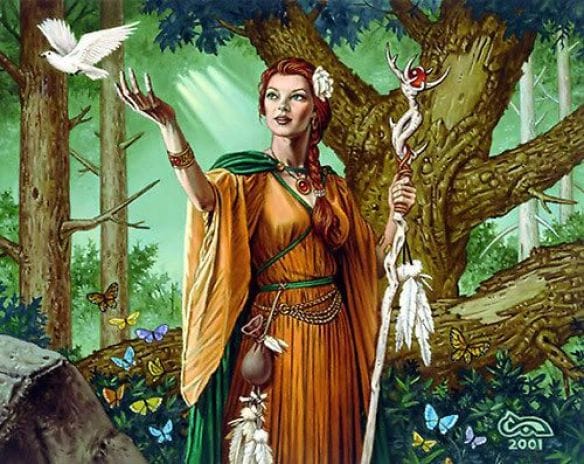
Pyanopsion Festival and Festivities
Pyanopsion, which is the 4th month of the Attic calendar and corresponds to October 15 -15 November, is also included in the calendar of the cities of Ephesus, Miletos, and Priene in Anatolia (4th century BC). is displayed; this person stands between a boy and a woman carrying a basket full of grapes.
Proerosia, the agricultural festival of Proerosia, dedicated to Demeter, was held on the fifth day of the month of Pyanopsion. The words “Pro” and “erosia”, which give the festival its name, mean “time to prepare the soil for plowing”.
Women carrying food also took part in the religious procession of this festival. It is thought that the women carrying food symbolize the mothers of seven virgin boys and seven virgin young girls sent as tribute to the Cretan king Minos.
Pyanopsia is a primitive nature cult practice that takes place during this festive seed-planting time that gives its name to the month of Pyanopsion. In this festival held in honor of Apollo, cooked beans, or “pyanaepsein”, were offered. As the first products of the soil, cooked beans were offered to the god and the whole household ate from it.
At the festival, olive branches called “eirosione” were decorated with woolen ribbons, various fruits, miniature wine, and olive oil containers were hung on them and circulated throughout the city, and after the ceremony, one of these branches was placed in front of each temple and house.
Oskhophoria in this festival, which means “carrying a bunch of grapes”, two young men dressed in women’s clothes, chosen from among the citizens’ children, started to procession from a Dionysos temple in Athens and went to the temple of Athena Skiras in Phaleron. they would take.
Meanwhile, a choir singing hymns about the meaning of the day followed these two young men. It is thought that this vintage festival may be related to the myth of Theseus, as well as to Dionysus or Athena.
Thesmophoria, meaning “treasure, women carrying chests”, was celebrated only by women. The festival took place between the 9th and 13th of the month of Pyanopsion (October-November), which is the time of planting, with celebrations lasting five days. It is a festival that includes celebrations and mystery ceremonies, also called Thesmophoria or Skiraphoria.
Since this festival was dedicated to the goddess Demeter, who was considered the mother of all grains, especially wheat, it was a kind of preparation for marriage and motherhood.
Chalkeia is a festival that takes place on the last day of the month of Pyanopsion. The word “khalkos”, meaning copper, which gives the festival its name, suggests that it may be one of the titles (epithet) of Hephaestus, the god of metals, or Athena, the goddess of craftsmen. However, we have no information about Athena’s Chalkeia title (epithet) worship and cult features.
The Chalkeia festival, whose history goes back to the Bronze Age, was organized in honor of Athena Ergane in this direction, and later it began to be celebrated in honor of Hephaestus.
Apaturia is a festival whose last three days extend to the month of Pyanopsion. Held in Attica and many Ionian cities, Apaturia was celebrated as a purely patriarchal union with the participation of neighboring phratria, or “brotherly unions”. Originally celebrated to commemorate the war of the Athenians against the Boeotians, the first day of the festival was called Dorpia, meaning “feast.”
On the first day, the members all ate together. The second day was called Anarhysis, meaning shedding, and spilling blood, and a sacrifice was made. The name of the third day when new members were accepted to Phratria and the ceremonies for cutting the hair of boys who reached puberty was called Koureotis. The fathers of legitimate children born that year would sacrifice either a ewe (Marya) or a goat to the god after registering these children.
At the beginning of the ceremony, the priest presented the god with spike-shaped cookies made from barley and wheat flour and made a water libation. For these presentations to be made, there was a condition that those present should not object to the registration process. Some of the meat of the sacrifice was served to the participants of the ceremony along with wine. Finally, a libation was made in honor of Dionysus, the god of wine.

Maimakterion Festival and Festivities
The name Maimakterion derives from the verb “maimao”, which means “exuberant, overflowing, disruptive and destructive, roaring”, and is the same meaning as maimaktes, which is also the epithet of Zeus and symbolizes the events in the atmosphere, the transition from autumn to winter. The month of Maimakterion, associated with this epithet, is the name given to the period sometimes from November and sometimes from mid-November to mid-December.
According to the Attic calendar, Maimakterion was the month of storms.
According to another interpretation, it is claimed that the Maimaktes epithet belongs to Dionysus and that Maimakterion symbolizes the activity in the vineyards and winemaking during the vintage time. According to this interpretation, the month of Maimakterion falls in the middle of October, that is, at the end of the month of Pyanopsion.
Plutarch talks at length about the ceremony dedicated to Zeus and Hermes of the Underground, which the Plataians undertook to perform on behalf of all Hellenes and Ions on the 16th of the month of Maimekterion.
Maimakteria, celebrated in honor of Zeus Maimaktes, is considered an extended continuation of the Oschophoria “grape-bearing, vintage” festival. There is also the opinion that Maimakteria is a very magnificent festival in this sense and is celebrated in the month of Pyanopsion. In the Maimakteria festival, where wine was forbidden, bread, buns, and fruit were offered to the god.
The prohibition of wine in this festival, in which a cleansing ceremony is in question, invalidates the opinion about Dionysus. Celebrated in the cult of Zeus Maimaktes, the purpose of this festival was to calm the anger of the storm-raising god and turn him into a protective and benevolent god.
The clouds were accepted as the expression of Zeus Maimaktes’ anger, and it was believed that with the sacrifices dedicated to the god, this angry god turned into Zeus Meilichios, that is, clearing the sky from the clouds.
Diasia is one of the oldest festivals of the Attica region, celebrated in honor of Zeus Meilichios on the last three days of the month of Maimakterion. This festival, which was of great importance in the Homeric and Archaic periods, lost its importance due to the increasing importance of the cult of Dionysus and the close dates of the Anthesteria festivals and this festival.
With the participation of all the people of the region, the people engaged in agriculture celebrated the festival, which was celebrated on the 23rd of the month of Anthesterion (March 14), as the end of the winter season.
Since the offerings made to the god in the festival had a mysterious and chthonian feature, they were made outside the city after sunset. To the gods of the homeland, basileus archon on behalf of the city would offer sheep, especially Marya (female sheep) and pig as a sacrifice.
The poor, who could not sacrifice, offered cookies with animal motifs. Xenophon tells that he slaughtered piglets for Zeus Meilichios and had them burned, according to the tradition of his ancestors. In both Zeus Maimaktes and Zeus Meilichios cults, the clouds, which were accepted as the symbol of the god, were symbolized by the animal skin that was sacrificed to the god.
The cult associated with the hide had its origins in the “dioscodion”, that is, the purification function. Because contact with the victim’s skin would provide purification. The person who wanted to be cleansed of his sins sacrificed a bull in the name of god, and the skin of this sacrifice was called “dioscodion”. The person who would be cleansed of his sins would perform this action by standing on his left foot on the skin that was laid on the ground.
In the Diasia festival, staff called kerykeion (Hermes’ staff) with a snake wrapped around it, which were also Hermes’ details (attributes) were carried. The snakes on these staffs carried in the parades, about which there is no information in the written sources, suggest that the worship has khthonien (views with the afterlife) characteristics. This appearance, which is associated with the cult of the dead, indicates that he also has the feature of a “protective god of the dead”.

Poseidon Festival and Festivities
Although there is not enough information about Poseidon, the 6th month of the Attic calendar, indicates the existence of a festival called Poseidon dedicated to Poseidon. Dating back to the Mycenaean period, the meaning of his name is “master of the world” or “husband of the goddess of the earth”.
Haloa was a festival celebrated on the 26th of the month of Poseidon. The festival, which means “threshing place”, or “harvest festival”, was celebrated in honor of Demeter and Dionysus. Only fruits were offered to these gods, who were protectors of agriculture and all crops. Only women participated in the skolia, which was a part of the festival, meaning the song sung at the dinner and drinking table.
Country Dionysia or Little Dionysia, which we learned from Aristophanes’ The Coalsmiths, in the festival, wine, wine bottles were carried and a goat was carried around in the procession. It is an agricultural festival entirely dedicated to Dionysus.
In December, the phallos (phallus) were carried to the countryside, accompanied by a procession at the festival. Here, sexually explicit songs and poems were sung, jokes were made, and the seed sown was fertile with the games organized.
This festival, which is one of the events of great importance between the states in the Attic and the Ionian city-states, is celebrated according to the traditions and values of each tribe, and the celebrations are organized by the local rulers in each region or demos.
According to Aristotle, comedy evolved and developed because of and thanks to the leaders of these entertainments. During the festival, sacrifices were made, wine was drunk, and gifts were presented to the god.
Gamelion Festival and Festivities
The month of Gamelion today corresponds to January 15 – February 15 and is the 7th month of the Attic calendar. Lenaia is a festival celebrated in honor of Dionysus on the 12th of Gameli approval, meaning “the month of marriage”. Lenaia comes from the name of the place near Athens where there is a temple dedicated to Dionysus Lenaios.
There is no evidence that dithyrambs or satyr games were made during the Lenaia festival in the Classical Period. Officially, only comedy and tragedy were performed at this festival.
There is also no conclusive evidence about the number of plays staged. The festival got its name from the word lenos, which means ‘crushing boat’, and lenaion, which means ‘the place where the grapes are crushed and preserved until they ferment’. The Lenaia festival has a measured exuberance.
Although it is not known for sure, it is thought that the ceremonies were carried out at night from the torches seen on the vases and the word daidoukhos, that is, the torch bearer, which is mentioned in the records of the festival.
Celebrated primarily in Athens and between the Ionian cities, the Lenaia festival is not as important as the City Dionysia, but it is an entertainment venue where important plays by famous playwrights, especially in the field of comedy, are staged. Here, five comedy writers participate in the competition with one play and two tragedies with two plays.
The official realization of the organization goes back to the middle of the 5th century BC. In Athens, comedy was exhibited as an improvisation for the first time at the Lenaia festival. Tragedy, on the other hand, emerged fifty years later, in about 440 BC. However, comedy has always been more important for this festival. Since it was closed during the winter season, the importance of the plays remained within the local borders.
The Gamelia festival means “marriage month” and was celebrated on the 26th of each Gamelion month to celebrate the sacred marriage of Hera and Zeus on the island of Samos with a magnificent ceremony. There is no information about the celebration of the Hierosgamos “holy marriage” festival.

Anthesterion Festival and Festivities
The month of Anthesterion is the 8th month of the Attic calendar, which today corresponds to February 15 – March 15. Anthesteria is the oldest and largest festival held in honor of Dionysus in the month of Anthesterion in Athens and the cities of Ionia. The Anthesteria festival was celebrated only by children, as it was held for children at the end of February and beginning of March, “when the flowers and trees bloom and bloom”.
The words anthesteria and anthesterion are derived from the verb anthein (to bloom). It is believed that the god, who was called to the earth through other festivities in this month, came out of the underground and entered the earth among the women of Athens. These names of the god Dionysus, who was worshiped with the titles of Euanthes and Dithyrambos (epithet) in the temple in the swamp, are also related to Anthesteria.
This festival, celebrated in the month of Anthesterion each year, lasted for three days to celebrate the beginning of spring and the wine left to ferment at the previous vintage. The first day of this festival, which is celebrated on the 11th, 12th, and 13th days of every Anthesterion month, is called Pithoigia, the “barrel opening” day, and the barrels in which the wines made the year before are opened and the wine is tasted.
At this time of the year, that is, in February-March, the vines are pruned, the second boiling of the wine is finished, it is ready to drink and now the wine containers are starting to open. The first day of the festival was called ‘Pithoigia’, that is, ‘the day of opening the pithos and the barrels’.
On the first day of the festival, wines were drunk, youngsters stomped on wineskins and girls swung on swings. The next day, the wines were taken to the temple of Dionysus and distributed to the people. A drinking competition was held under the chairmanship of archon basileus, who was the priestly successor of the Athenian kings specially selected for this ceremony.
An actor who wears a horn and hides on his head, representing Dionysus, goes to a building called a barn (boukolion) in a ship-shaped car, on which the wife of the archon basileus and the wife of the archon basileus are symbolically married to the wife of archon basileus, and during the wedding ceremony, the spirits go to the streets. It was believed that he was flying around. To avoid them, hawthorn leaves were chewed and the pitch was applied to the doors of the houses.
On the night of the second day and the third day of the festival, porridge was made and presented to the god Hermes, the guide who guides the spirits to the underworld. At the end of the festival, the people, who were empowered by the offering to Hermes, would walk around the streets saying “Anthesteria is over, go now spirits” and drive away the spirits. Thus, Dionysus was referred to as a god who symbolized both death and life.
Here the spirits of the dead are called thirsty ones (dipsioi). However, these spirits are thirsty for wine, not water. On this day in question, the spirits that were thought to be influenced by the smell of wine that rose from the open pithos and spread to the whole city would come out of the underworld, and no one, including slaves, would be deprived of wine.
The most important time of the festival on the 12th is the day of Khoes. On the second day, called “khoes”, liquid offerings such as honey, wine, and water were held in honor of the gods. On the day of Khoes, women come face-to-face with the god only through the wife of one person, the archon basileus, who earned the respect of the queen in previous times.
The most important cult events were held by women in great secrecy, which men were not allowed to attend. Today, children were given little khoes on which game scenes were depicted. On one of these vessels, the wedding ceremony procession of the archon basileus is depicted.
Archon basileus carries thyrsos and kantharos, the attributes of Dionysus, and sits in the wedding car, while his wife gets help from another person to get into the car. Behind them, three boys carry the plow, the symbol of marriage.
The third and final day of the festival was called Khytrai. Today, a double-handled, round-bottomed, and deep type of cooking pot was named after the khytra, which is a pot. Various vegetables were mixed in this pot and boiled all day long, and then this cooked meal was presented to the underworld god Hermes on behalf of the dead.
However, no one from the household would eat this dish. Thus, it was believed that the soul of the deceased was released and returned to the places where he lived while on earth. When the sun went down and the day was over, the host said, “Come back to your house, Demeter, Anthesteria is finished!” he would send the soul back to the underworld.
The Anthesteria festival had two themes: wine and the spirit of the unseen realm. It is possible to understand the theme of wine, but it is not clear what kind of relationship the “unseen forces” have with Anthesteria.
Diasia was a festival dedicated to Zeus Meilichios in Attica and Ionian cities, after the Anthesteria festival, towards the end of this month, when the city walls were not yet built. On the day of Diasia, in which all citizens participated, the rich offered sacrifices to the god, while the poorly burned incense. Xenophon talks about this festival, which takes its name from the god Zeus.
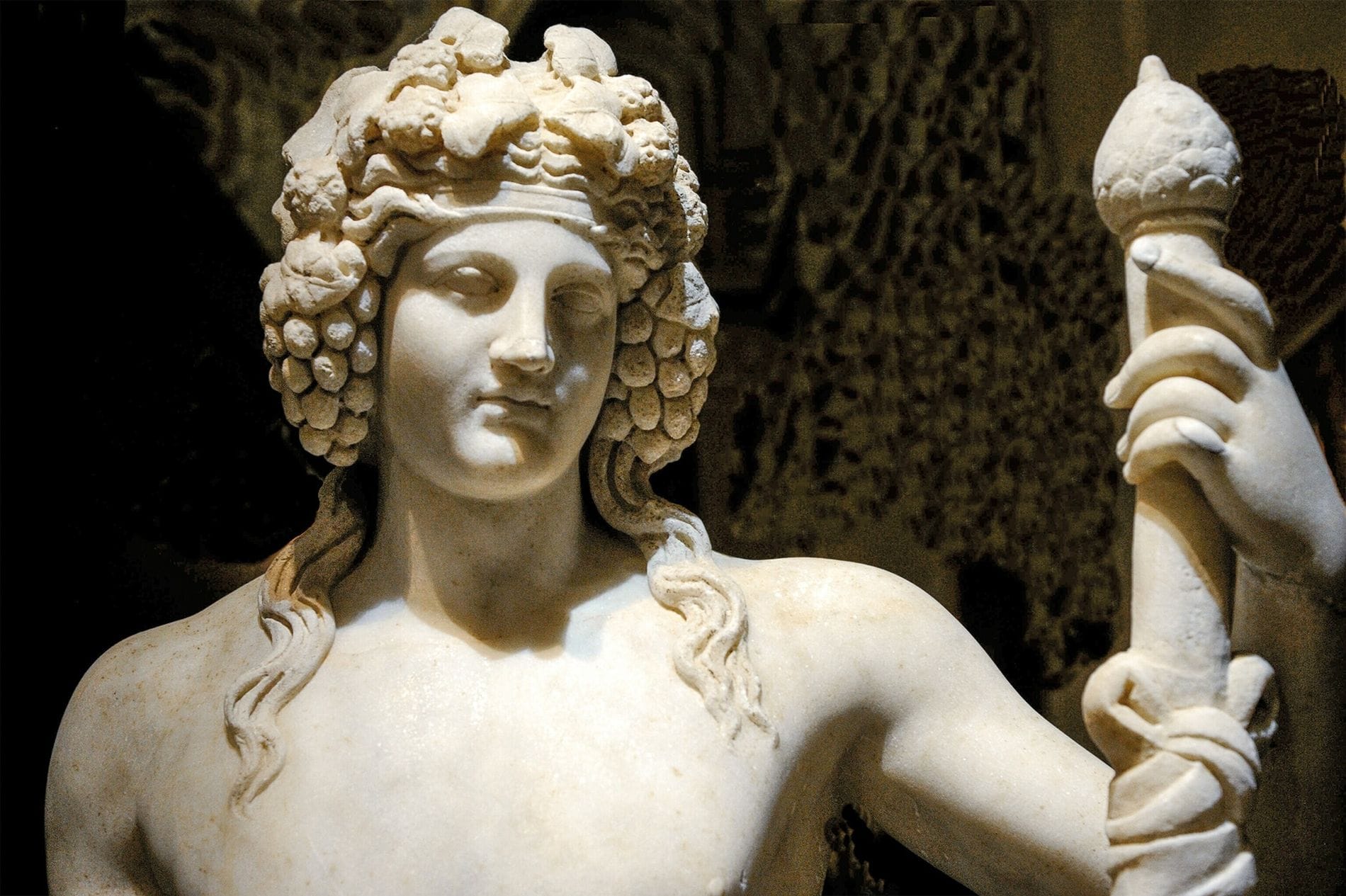
Elaphebolion Festival and Festivities
Elaphebolion, which corresponds to March 15 – April 5 today and is the 9th month of the Attic calendar, takes its name from the goddess Artemis’s adjective meaning “deer hunter”.
In this festival held on the 6th of the month for Artemis Elaphebolos “who hunts deer”, a deer was first hunted to present to the goddess. Later, a kind of honey cake called “elophoi” sprinkled with sesame was baked and presented to the goddess. The cult of Artemis Elaphebolios did not spread to the whole society, and the worship area was limited. However, it is known that this festival was held in the cities of Ephesus, Miletus, and Iasos in Anatolia.
A celebration called Elaphebolia (deer hunting festivities) was held in honor of Artemis, and buns in the shape of deer were presented to the goddess.
Asklepiaia Proagon is a festival celebrated in the month of Elaphebolion and dedicated to Asklepios. However, there is no information about the festival.
The Urban Dionysia is an ancient local festival that was celebrated in the month of Elaphebolion until the middle of the 6th century BC, and its content changed over time.
This festival originally came from Eleuthera, a small settlement located between Athens and Boeotia, and this name was later given to Dionysus as the epithet: Dionysos Eleuthereos. Towards the end of the 5th century BC, a new cult of Asclepius, the god of health, came to Athens and one day was dedicated to him this month.
Dionysia had a different way of being celebrated than other festivals. The Methoikos (resident aliens) wore purple robes and carried an offering tray called “skaphia” to put their offerings, so the parade in which the offering trays were carried was called the skaphephoroi. The parade was called askophoroi, in which citizens wore their daily clothes and carried wineskins, usually made of leather, called “askos” on their shoulders.
Bulls were sacrificed on the altars next to the Dionysus theater. For example, Based on financial calculations, it is known that exactly 240 bulls were sacrificed in BC. 333. There was also a wide variety of dance performances. The day of these dance performances was the last day of the festival and was called “komos”. In the evening, a drinking feast was held only for men. All these practices of the festival celebrated for Dionysus form the basis of the tragedy.
The festival of Dionysia, which was previously celebrated locally, started to be celebrated in almost all Attica regions, even in Greece, in Ionian cities, and also in Ephesus, starting from the beginning of the 5th century BC. Unlike the Lenaia festival, which only citizens attend, this festival is open to the public.
There is no information about this festival celebrated in Pandia, Athens in honor of Zeus and the moon goddess Selene. Although the date of its construction is unknown, it took place in the middle of the month of Elaphebolion, after the city Dionysia festival.
As in the Panathenaean festival, the word Pan Dia may mean “To All Zeus”, or it may have been named after Pandia, the daughter of Zeus and Selene. In addition, it is thought that the Pandia festival may be dedicated to Pandion, one of the legendary kings of Attica, but there is no information to confirm this.
Munykhion/Mounikhion Festival and Festivities
The 10th month of the Attic calendar, which today corresponds to April 15 – May 15, Munikhion takes its name from a small harbor next to the acropolis of Piraeus. Like the month Elaphebolion, this month is dedicated to Artemis Munikhia. There is no other information about him except that a feast was dedicated to Eros on the 4th of the month.
On the 6th of the month of Munikhion, a parade was held to Delphinion in which only women participated. It is understood that Plutarch is related to the myth of Theseus from the account that this festival was held in Athens even in his own time to commemorate the young girls who were sent to Crete to be sacrificed to the Minotaur, and that Theseus sailed to Crete after completing his prayer and worship.
Munikhia is one of the best-known Artemis festivals, which gives its name to this month. Celebrated on the 16th of the month of Munikhion, Munikhia is the name of a mountain in the interior of Piraeus, and most likely this mountain had a cult quarry status and was given to Artemis as a title (ephitet) over time. A goat was sacrificed to Artemis at the Munikhia festival, which means “only the night shows”.
Young girls were most likely sacrificed to Artemis in the early days. When it comes to the classical period, goats, decorated like young girls and equipped with precious jewels, began to be sacrificed. Attributes of the goddess are the goat and the she-bear. At the feast, which was a part of the festival, a moon-shaped cake called amphiphontes, which means “illuminating and shining,” was baked.
Based on the name of this cake, we also see that Artemis is accepted as the goddess of the moon. In Greek mythology, the virgin moon goddess Artemis is the New Moon, the mature Selene is the Full Moon, and the mysterious Hecate is the dark side of the moon. In the parade held for Artemis on the 16th of Munikhion, girls carrying amphiphontes would pass.
At night the young girls would form a circle with lit candles in their hands. This scene indicates that Artemis was worshiped as the goddess of the moon.
In the Hellenistic period, the festival began to be celebrated in the entire Piraeus region, and later it was celebrated together with Attica and Ionian cities. The Epheboi group, meaning young men with military training, used to run sailboat races along the coast of Munikhia of the same name from Piraeus.
In addition, a group of children called Arrephoroi (the bearers of mystery), chosen by the king from among the girls between the ages of 7 and 11 from aristocratic families, paraded with baskets given by the Athena priestesses. In the baskets that these little girls carried on their heads were either sacrificial instruments or the newly woven dress of the goddess.
However, the Arrephoroi ceremony was celebrated for Athena in the month of Skiraphorion, the last month of the Attic calendar, and the longest month of the summer season. Parke says that this is a typo and that the correct one might be the Errephoroi ceremony from Erse, a small dew goddess.
The reason why so many young girls were chosen for the procession is unknown, but probably because they were considered pure and innocent because of their young age. Anyway, the gold ornaments these girls dressed in white robes wore were consecrated after the ceremony.
Another festival held every four years in the name of Artemis Brauronia is Brauronia, which takes its name from the epithet of the goddess. Brauron, the city of the Attica region, was famous for the cult of Artemis, and at the festival held here, little girls between 5 and 10 years old would perform a bear dance in honor of the goddess.
The priestesses of the goddess, who wore purple robes, were called arkteia, meaning bear. The festival is based on the myth that the goddess’s favorite nymph, Kallisto, turned her into a bear after learning that she was pregnant.
Cleanliness and chastity were at the forefront of the qualities that should be found in those who served in the cult of the goddess so that the nuns who got married lost their duties. Those who devoted themselves to the service of the goddess did not abide by this rule, and Artemis severely punished them.
Since the beginning of time, the intertwined lives of humans and animals have been extremely rich sources of symbols. As seen in the bear example, animals were worshiped as gods and associated with good or bad luck; They were generally regarded as a source of power and wisdom. Since the bear was accepted as medicine and healing, people adopted the bear as a totem or ancestor to reach wisdom in these areas.
The 4th day of the month of Munikhion is dedicated to Aphrodite. A feast was also held for Eros, who was not missing where Aphrodite was. However, there is no other information about this festival.
Olympia is another festival celebrated on the 19th of the month of Munikhion. The information about the Olympieia festival is narrated by Plutharkhos. Most likely BC. Founded in the middle of the 6th century by Peisistratos and dedicated to Zeus of Olympia, this festival continued to be celebrated until the time of Emperor Hadrian.
In the same century, there was a great temple of Zeus near Ilissos. This temple was in the same plan as the temples of Ephesus, Miletos, and Samos built in the same period and was in the Ionic style.
In the Hellenistic Period, the equestrian procession performed at the hippodromes, and the most well-known part of these shows is the horseback riding competition called “anthippasia”. Also, bulls were sacrificed to Zeus at the festival.
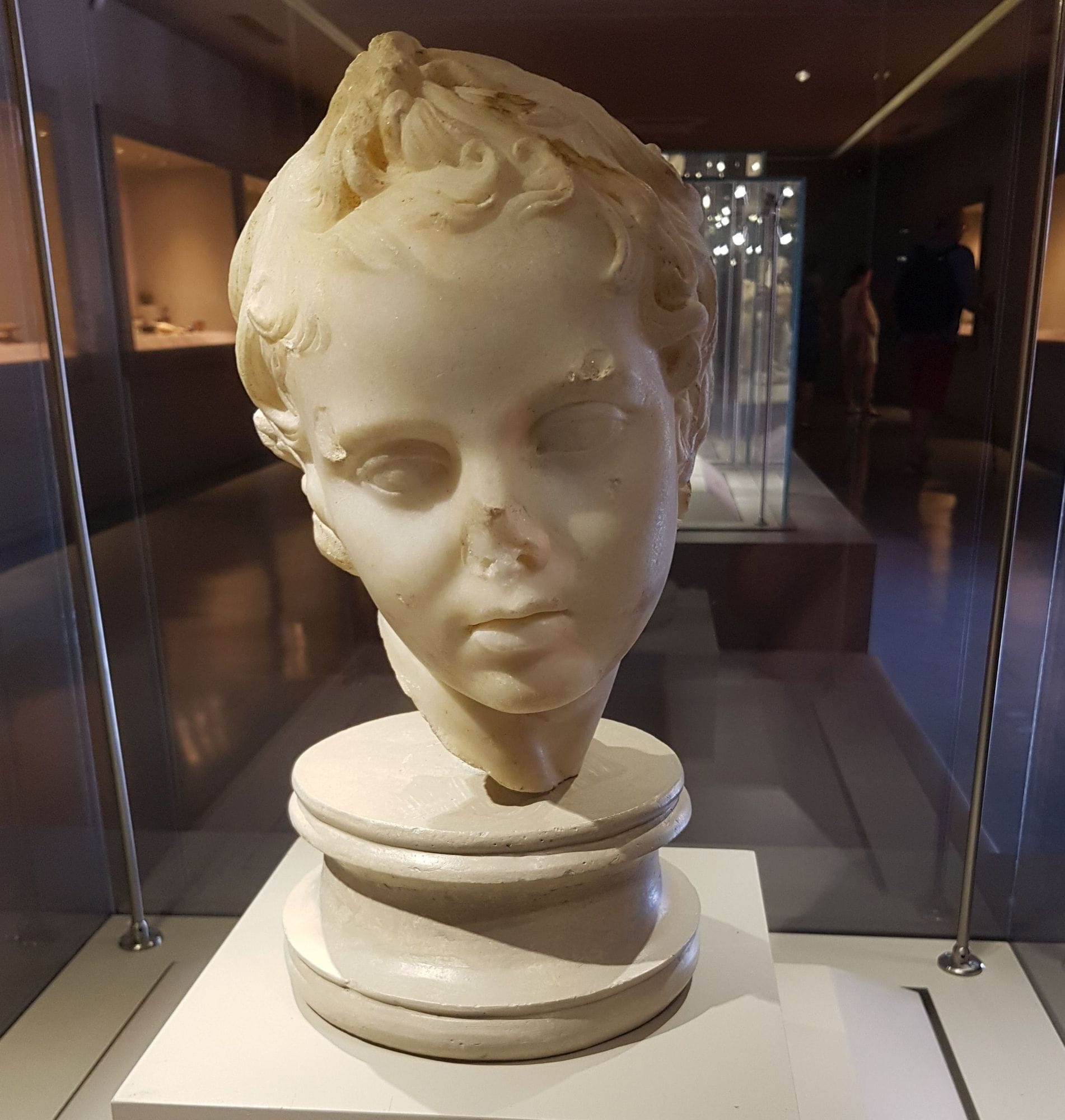
Thargelion Festival and Festivities
Thargelion, the 11th month of the Atik calendar, corresponds today to May-June. The most important event of this month is the Thargelia festival celebrated for the god’s Apollo and Artemis. Thargelia means harvest festival from the word thalysios.
Thargelia was celebrated on the 7th of the month and was dedicated to Apollo, this festival lasted for two days, during which bulls and goats were sacrificed to Apollo. On the first day of the Thargelia festival, a ritual purification ceremony was performed by selected scapegoats, possibly hoping for a new beginning. Before moving on to the festival, it would be appropriate to explain the religious pollution.
As in many societies, touching something unclean, breaking a religious rule, or committing a religiously forbidden crime is a condition that defiles or taints a person in Greek society. In this direction, pollution creates the effect of suffering bad consequences arising from the anger of the gods.
An example of this is the outbreak of the plague epidemic as a result of the pollution of the city of Thebes and the disappearance of fertility in the city due to the crime committed by Oedipus in Sophocles’ King Oedipus play.
For this reason, it is necessary to find the source and cause of the pollution, which is still valid today, then throw it out and be purified by religious orders. An unclean person would be considered extremely repulsive by the gods, and therefore would not be allowed to attend holy places and ceremonies by the practitioners of the religion.
The situations that led to religious pollution in ancient Attic society and Ephesus can be briefly listed as follows. In the society in question, birth, and death were polluting situations, for example, a corpse was considered a dirty thing, and touching it was considered a cause of contamination.
Not following religious rules properly or disrespecting them was another source of contamination. Sacrificing without washing the hands, touching, and blood on the hands was a state of contamination that should always be purified.
It was even believed that people who were polluted but did not get purified were either insane or had epilepsy. For all these reasons, if people and cities were polluted, the evils would be removed with purifying rituals, and for this reason, the pharmakoi, or “scapegoats”, on which all the filth of the society was burdened, were driven from the cities.
The scapegoat custom applied in Western Anatolia and Ephesus in the 6th century BC was as follows: When a city suffered a plague, famine, or another public disaster, an ugly or crippled person was chosen to take on the evils affecting the city. The chosen person was brought to a suitable place, and he was given dried figs, a loaf of barley flour, and cheese.
After the person chosen as the scapegoat ate them, his genitals were struck seven times with wild fig branches, then he was burned on a woodpile made of forest trees, and the ashes were scattered into the sea.
For the custom of pharmakos at the festival of Thargelia, held in Attica and in the cities of Ionia, some low-class, useless people were fed to the public account. Particular attention was paid to the fact that these people were ugly and poor, representing the women and men of the city.
When any natural disaster or disease such as drought or plague occurred in the city, two of these excluded people were sacrificed as scapegoats. One of the victim men wore black around his neck, and the other, dressed as a woman, wearing a string of white figs around his neck. In this way, they would perform a purification ceremony around the city.
Considering the characteristics sought in men to be sacrificed in the pharmakos tradition, it brings to mind that this may be related to magic. After the ceremony, these men are hit with fig branches and chased out of the city. Similar practices were also made in Kolophon and Ephesus.
The purpose of this ritual is to get rid of the responsibility of religious crimes through these two people chosen instead of men and women in the community.
Pharmakos shows are only seen in the Classical Period. In 5th and 4th century literature it appears only as a comic misconduct. On the second day of the festival, various offerings were made for the god Apollo, to whom the festival was dedicated. The meal, called Thargelos, containing all kinds of early grains and vegetables, was cooked in a single bowl and presented to the god.
In this month, which corresponds to May – June, the first vegetables and grains were harvested. The Thargelos meal was eaten together, and fresh vegetables and fruits were also offered to Apollo to give fertility to his lands. It is said that the act of hitting the genitals in the festival of Thargelia means to save the productive forces of nature from spells made by demons and other evil forces.
Since Thargelia was a harvest festival, it could be thought that it was intended to activate the creative and fruitful power of the plant god.
The most important element of the Thargelia festival is that young children are accepted by their fathers and registered in the phratries and blessed as a new family. This means that Apollo is the protector and master of young children and youth. In addition, on the first day of this festival, offerings were presented to Demeter Khloe.
Khloe’s title (epithet) means “green shoot, sprout”. Based on this, it can be said that Demeter is not only the goddess of wheat and grain but also of young sprouts.
Towards the end of the month of Thargelion, two more festivals were held: Plynteria and Kallynteria.
Plynteria was a festival dedicated to the Goddess Athena Aglauros and was celebrated on the 22nd of Thargelion. It is the day when the cult statue of the goddess, which has been made of wood since ancient times, is washed in the festival. This cult statue was almost the size of a human.
However, by the 5th century BC, the famous sculptor Pheidias made a huge statue of him out of gold and ivory. The statue of Athena Aglauros was the most essential cult object of the Acropolis.
The persons in charge of dressing and removing the robe of this magnificent statue and performing other ceremonial duties were called praxiergides, and the ceremony was conducted in complete secrecy. The ceremony was carried out as follows: First, the dress, jewelry, and other ornaments of the statue were taken off, then they kept the place where he stood in the temple tightly covered.
The statue was wrapped around and taken out, possibly so that the temple could be cleaned. The day of Plynteria was considered “apophrades” or “diesnefasti”, an unlucky, black day among Athenians. This is because the goddess cannot protect the city on the day of the festival. Indeed, on a day like this, no Ephesian would dare to undertake any serious business.
While the statue was going towards the sea to be washed, dried figs called “hegetaria” were carried in their hands, accompanied by a procession. The temple was washed away by the waters carried by the Kephisos and Ilissos rivers, which were flooded with rainwater. Seawater purification was only done in mysteries. The statue, which was transported to the sea, was washed by two young women.
At the same time, the statue’s clothes were washed and cleaned. When the purification process was over, the statue was dressed again. The statue was brought to the temple after the parade, accompanied by military guards and torchlights. The cult officers, called Praxiergides, who were responsible for the statue, put on the ornaments and ornaments of the statue and placed it in its place in the temple.
Kallynteria is the continuation of the Plynteria festival and is the festival where spring cleaning is done to the temple of Athena. Starting from ancient times, there was a torch that burned day and night in the temple of Athena. When the famous sculptor Kallimakhos made the Erechtheion, he made a lamp made of gold that burned day and night for 12 months.
The festival, which was held on a day between the 20th and 25th of the month of Thargelion every year, on the day when both the oil reservoir and the lamp itself were cleaned, was called Kallynteria, which means “spring cleaning”.
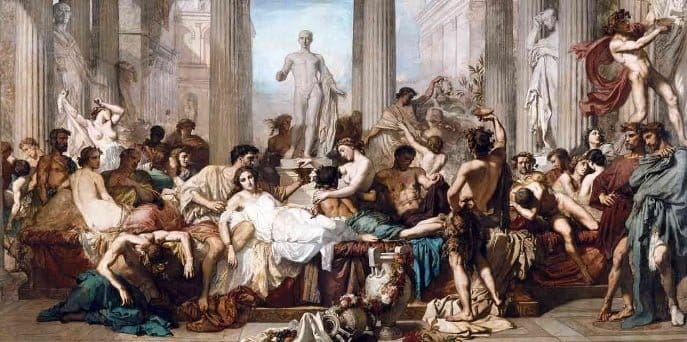
Skirophorion Festival and Festivities
Information about the festival, also called Skirophoria or Skira, celebrated in Skirophorion, the 12th and last month of the Attic calendar, is extremely insufficient. However, Aristophanes writes that Skirophoria was a women’s festival. On the other hand, the lexicographer Harpokration claims that the word “skiron” derives from the Skirophorion mountain and that the priestess of Athena was called Skiron, and even the priest of Poseidon was given this name.
Lysimakhides, one of the late writers, possibly the Augustan writer, writes that a foreign parade outside the Acropolis was called a skira. He adds that this foreign cult practice was dedicated to two gods, Athena and Poseidon, and eventually merged with Erechtheion.
Skira festival is very similar to the Pyanepsia festival. For this reason, it is possible that it was dedicated to Demeter rather than the protector of the city, Athena Polias. During the Skira festival, which lasted only one day, the women stayed at home and ate garlic so that their husbands would not come near them.
Another practice in the Skira festival was that two young men wearing women’s clothes, in other words, would go to the Dionysos temple with the vine branches they carry in their hands (oskhophoria). This ceremony is almost the same as the festival held in the month of Pyanopsion, where there are demonstrators called “oskophoria”.
Again, if we believe Lysimakhides, we can say that the big white canopy carried in the parade was called “skiron” and the festival got its name from this. However, this cannot be the correct inference, for then the bearers of skiron would have to be called skiraphoria. Maybe it would, but unfortunately, we don’t have any proof.
Festivals in Attica and Ionian cities consisted of two parts. While the first part consisted of mixed grains such as wheat and barley, cake offerings made of various flours, and water libation, since wine was forbidden, the second part consisted of sacrificial ceremonies. Therefore, the Dipolieia and Bouphonia festivals, both of which are dedicated to Zeus, actually point to different parts of the same festival.
Dipolieia was celebrated on the 14th of the month of Skirophorion when the moon was full. It is a very strange or unusual festival among Attica festivals, which takes place two days after the Skira festival. According to Aristophanes, who gave information on this subject, this festival was celebrated in the name of Zeus Polieus, the god of the city of Athens.
Polieus, which is frequently used among the political epithets of Zeus, symbolizes the integrity of the state, so there is the cult of Zeus Polieos in numerous cities.
Bouphonia, which means “cutting a bull”, was celebrated in honor of Zeus since the time of the legendary king Erechtheion. The bull to be sacrificed was predetermined, washed, cleaned, its feathers polished, and ornaments put on its head. A priest and two attendants in their special clothes performed the sacrifice. Before being slaughtered, the bulls were fed specially prepared cakes and fodder.
Diisoteria, this festival held on the 29th and dedicated to Zeus Soter (Zeus the Redeemer) must be the same as Dipolieia. Because after the Greeks and Persians started to fight, they gave the title of savior (epithet) to almost all their gods.
As a result, it is seen that there are four elements in all the calendar festivals celebrated in the twelve months in Attica and Ionian cities: These are behaviors with ritual value, objects that play a role in social life, items related to entertainment, and lastly, items related to clothing, adornment, and ornamentation.
Unlike today, the purpose of the city or religious festivals with limited participation in ancient societies were magical rituals, which were to appease the gods, to make sense of the workings of the world and the seasons, and especially to increase fertility.
The diversity and importance of these magical rituals also come to the fore in ancient Hellenic societies. It is understood that the rituals consisting of the ceremonies and rules of the religious beliefs of the society in question are repeated every year with unchanging successive behavior patterns related to worship.
At these festivals, small wine bottles, objects such as utensils, various animals such as deer and bulls, fruits and vegetables such as grapes, figs, and beans, etc. It emerges as an element that plays a role in the existence of people and their dominance over the place they live in.
The entertainment-related part of the festivities is running, wrestling, car racing, etc. It consists of various games and shows where talents are exhibited. Finally, the participants need to dress in the spirit of the festival in the festivals that keep the society in unity and solidarity.
In addition, cleaning the temples, re-dressing the statues, decorating the animals to be sacrificed, and equipping the animals to be raced with various objects are the last of the four elements mentioned.
As it can be seen, numerous festivals, large and small, celebrated in the Hellenic society in Attica and Ionian cities and also in Ephesus within twelve months are shaped around the four elements mentioned above. Many festivals celebrated in the name of gods and goddesses and determined according to the calendar month played a very important role in keeping the society alive with the spirit of unity.

